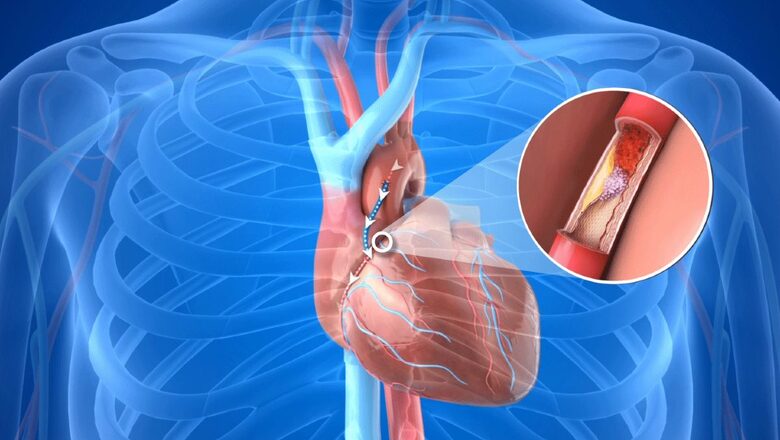
views
Coronary Artery Bypass Grafting or CABG, as it is commonly called, is a surgery cardiac surgeons routinely perform, to bypass the blocks in the blood vessels in your heart. Sounds scary? Well, it isn’t as scary as it sounds. CABG is a routine surgery and is definitely recommended for patients who may be prone to recurrent heart problems and attacks. It’s a procedure, which, will help your heart function better.
What is Atherosclerosis?
Atherosclerosis – the hardening and narrowing of arteries – is the usual cause of heart attacks, strokes and other cardiovascular diseases. In Atherosclerosis, fat gets deposited within the walls of a blood vessel and forms what is known as ‘plaque’. This plaque protrudes into the blood vessels of the heart and obstructs blood flow to the heart. As a result, it puts our heart at risk.
Atherosclerosis and CABG
CABG is a procedure to treat coronary artery disease which is caused by Atherosclerosis. CABG is however not the first procedure which will be recommended. If you have already tried various medications and may have had one or more angioplasties, then CABG is the option to go for. It is also ideal for patients with coronary artery diseases whose blocks are not suitable for angioplasty.
What happens in CABG?
During a CABG surgery a segment of blood vessel is taken from a different part of the patient’sown body, usually the chest (Internal mammary artery – the LIMA and RIMA), leg (Vein), or forearm (Radial Artery) and is attached to the coronary artery, below the narrowed area or blockage. This new blood vessel is known as a graft and it provides the blood a new passageway to reach the heart and bypass the block.
Depending on the extent of the blockage, a patient may require multiple bypasses:
Beating Heart CABG
Doctors usually perform a beating heart bypass surgery, which in simple terms mean, performing the bypass surgery while the heart is still beating. Over the years, this method of surgery has become the preferred option, mainly because it gets over quickly, the patient’s stay in the hospital is shorter and there areminimalrisks. In this surgery, doctors use a tissue stabilization system to stabilise the area of the heart they need to operate on.
Minimal Access CABG
Minimal access CABG is also known as Minimally Invasive Cardiac Surgery or MICS CABG. As opposed to the regular method of performing the CABG surgery, where the breastbone is cut open to reach the heart, in MICS CABG method, the breastbone is not cut open. The operation is done through small openings on the side of the chest, using specialized instruments. This method is less painful and recovery is even faster.
LIFE AFTER CABG:
Recovery period for a bypass surgery is usually 5-7 days. Within this time, in addition to the post surgery rehabilitation, patients are made aware of the lifestyle habits they need to adopt thereafter, to lead a healthier life. They are taught a set of graded exercises which they need to follow religiously. They are also put on medications, which cannot be skipped. The following lifestyle changes are always suggested to patients who undergo CABG surgeries:
- Eat a healthy diet.
- Exercise regularly
- Try to lose weight (if you are overweight or obese).
- Control Diabetes and Hypertension (if you have them).
- Quit smoking (if you smoke).
However, in all other aspects, the patient can lead a normal life and continue working and traveling as before.
Read all the Latest Lifestyle News here

















Comments
0 comment